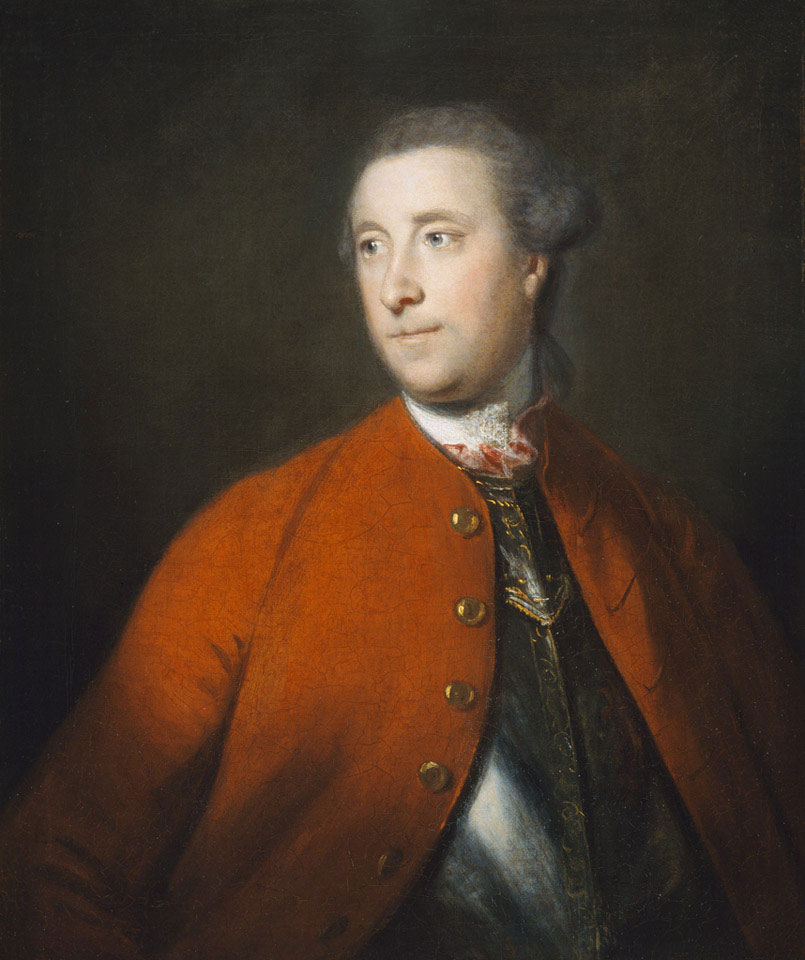
Online Collection
« Prev - 1 of 1 results - Next »
Colonel (later Major-General) The Honourable John Barrington (d 1764), 1758 (c)
Oil on canvas, by Sir Joshua Reynolds (1723-1792), 1757-58 (c).
John Barrington was commissioned into the 3rd Foot Guards in 1739 and transferred to the Coldstream Guards in 1746. In 1756 he was promoted colonel and appointed aide-de-camp to King George II. On the formation of the 64th Foot in 1758 during the Seven Years War (1756-1763), Barrington became its colonel. Here he wears a plain civilian coat over a cuirass and gorget, which indicate his military profession.
In 1758, despite a protest from his elder brother, William, 2nd Viscount Barrington, the Secretary at War, Colonel Barrington was appointed second-in-command to Major-General Peregrine Hopson, in an expedition against the French West Indies. After failing to take the island of Martinique, the expedition proceeded to Guadeloupe, the richest of the French islands. Following Hopson's sudden death on 27 February 1759, command devolved to Barrington. He inherited an army weakened by sickness and frustrated by inaction, while his fleet was diverted to other duties. Knowing that he could not take the island by force, Barrington set up a blockade, cutting off its supplies. On 1 May 1759 the island capitulated, and Barrington landed his force. He set up an administration, fortified the harbour and left a garrison to hold the island, before returning to England in June. On his return, Barrington transferred his colonelcy to the 8th (or the King's) Regiment of Foot. He died in Paris in 1764.
NAM Accession Number
NAM. 1959-11-22-1
Copyright/Ownership
National Army Museum, Out of Copyright
Location
National Army Museum, Study Collection
Object URL
https://collection.nam.ac.uk/detail.php?acc=1959-11-22-1

